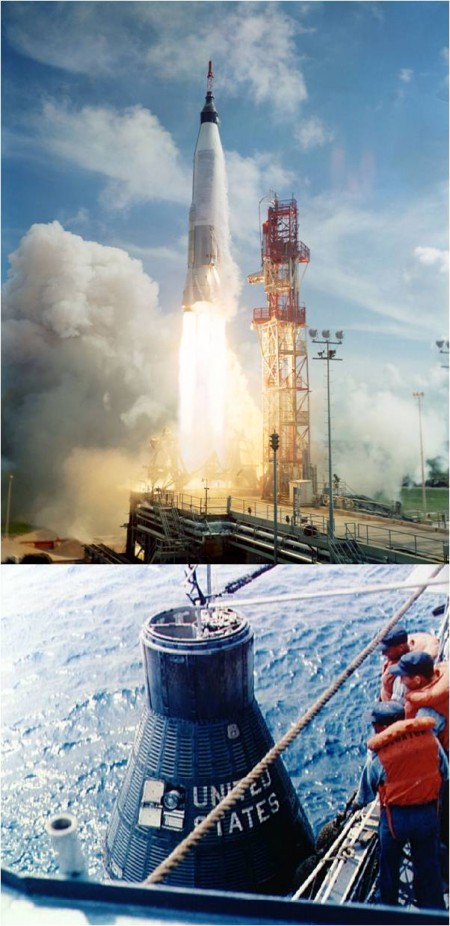Fifty-one years ago this month, the first Project Mercury unmanned orbital space mission was successfully conducted. Known as Mercury-Atlas No. 4 (MA-4), this spaceflight paved the way for the United States’ first manned orbital mission which took place less than 6 months later.
Project Mercury was America’s first manned spaceflight program. Led by the National Aeronautics and Space Administration (NASA), the basic goals of Project Mercury were simple: (1) Orbit a manned spacecraft around the Earth, (2) investigate man’s ability to function in space and (3) recover both man and spacecraft safely.
The guidelines for achieving the above were equally straightforward: (1) Use existing technology and equipment wherever practical, (2) employ the most simple and reliable approach to system design, (3) place the spacecraft into orbit using an existing booster and (4) conduct a progressive and logical test program.
The Mercury spacecraft was developed and built by the McDonnell Aircraft Corporation. A pair of existing military missiles were manrated for use on Project Mercury. The Redstone Intermediate Range Ballistic Missile (IRBM) was the booster for suborbital flights while the Atlas intercontinental Ballistic Missile (ICBM) served as the launch vehicle for orbital missions.
In the 24 months between May 1961 and May 1963, a total of six (6) manned Mercury spaceflights were conducted with great success. Manned suborbital Mercury-Redstone (MR) missions were flown in May (MR-3) and July (MR-4) of 1961. These initial forays into space set the stage for the more demanding Mercury-Atlas (MA) orbital missions flown in February 1962 (MA-6), May 1962 (MA-7), October 1962 (MA-8) and May 1963 (MA-9).
The spectacular achievements of Mercury’s manned spaceflights was made possible by a supporting series of unmanned test shots. Indeed, between August of 1959 and November of 1961, a total of 20 unmanned tests flights were conducted in support of the manned program. These tests thoroughly investigated all aspects of spaceflight including launch, ascent, orbital ops, reentry, recovery and abort. Investigation of the latter was aided by the use of Little Joe (LJ) launch vehicles.
Mercury-Atlas No. 4 (MA-4) was the first successful orbital mission of the Mercury Program. The vehicle was launched from LC-14 at Cape Canaveral, Florida on Wednesday, 13 September 1961. Lift-off of the Atlas D one-and-a-half stage booster occurred at 14:04:16 UTC. The MA-4 payload consisted of an astronaut simulator, several voice tapes, a life support system, a trio of cameras, and instrumentation to measure flight noise, vibration and radiation levels.
MA-4 flew one orbit about the Earth prior to retrofire. Reentry was entirely nominal with drogue and main parachute deployment taking place at 41,750 ft and 10,500 ft, respectively. Splashdown occurred 153 nm east of Bermuda in the South Atlantic Ocean. Mission elapsed time was 109 minutes and 20 seconds. Within 90 minutes of landing, the little spacecraft was recovered by the crew of the USS Decatur.
Other than some minor system glitches, MA-4 achieved all of its mission objectives. Along with the subsequent MA-5 mission, in which a chimp named Enos completed a problem-plagued, but successful two-orbit flight, the United States stood at the threshold of manned orbital spaceflight at the end of November 1961. The historic and long-anticipated day came on Tuesday, 20 February 1962 when NASA Astronaut John Herschel Glenn, Jr. became the first American to orbit the Earth during MA-6.

